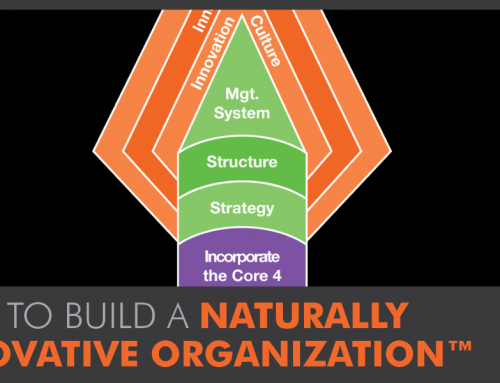[This post is Part 2 of the Build Your Sales Funnel series, a 10-part series. Here’s Part 1. Every company needs to build a sales funnel to maximize revenue.]
Amusement parks know that there are millions of thrill-seekers like me who are willing to pay to ride rollercoasters. They also know that there are millions of people who don’t prefer fast rides. Parks are designed to accommodate both, helping to optimize their revenue. They know that families and groups are made up of thrill seekers and those who like to play games and watch shows. And those willing to watch the kids and eat a funnel cake…
When we’re building our sales funnels, we need to identify customer needs. Actually, to know what it is that customers really want. Customers often don’t buy what they need, but they do buy what they want. I’ve struggled with this one. I see that companies need strategy help, but many only want marketing help, which is just a portion of the goodness I can offer. For a long time, I tried to convince them of their need, until I finally relented and started selling what they wanted, and Big Think’s revenues doubled almost overnight.
Finding the Fit
Market Fit is the term used to describe the proper fit between a product/service offering and what customers want. To see more about this, see Fit Product to Market, which is the first part of the Big Think Revenue Generator model. You need to find what customers are actually searching for on the Internet, and what they are buying in stores. What flies off the shelves versus what just takes up shelf space.
There are several approaches to discover or identify customer needs and wants:
- Ask people
- Observe people
- Get statistics
- Watch competitors
- Test
- Vision-Cast
These are the general categories for doing market research. Here are some more specifics and a few tools:
Ask People
There are several ways to ask people what they want, including:
- Surveys
- Interviews
- Focus Groups
The problem with asking is that you may not get a true response. Many people want to be helpful with their answers, but you may ask out of context, or without understanding their complete story. Asking people may or may not help you identify customer needs and wants.
For example, if you ask someone if they’d be willing to buy a new kind of apple that’s sweeter and lasts longer in your refrigerator, they would likely say, “Yes.” When it comes time to buy an apple, they will likely buy what they normally buy unless there is a compelling reason to switch.
You may ask them if a price is appropriate, and they may say it’s fine. But that doesn’t mean they will buy it. In a corporate setting, a person may be interested in a product that you offer, but they may have to jump through so many hurdles to buy it that a marginal improvement may not be worth the effort.
The other thing we need to understand is that the majority of people only know their own context – how they would do something, and what their preferences are. They may not have ever thought about their needs the way you have, and therefore, when presented with a novel offering, they may discount it or think it’s great, but never buy it. Many people lack the vision of possibility, and instead opt for the proven and the comfortable. People didn’t know they needed the Internet until they did.
Bottom line: Asking people may be a good way to get started, but is ultimately not where you need to end your investigation.
Observe People
Watching how people use products or engage in services can help you understand shortcomings of existing solutions. Anthropologists may be able to pick up on subtle differences in how people use a product versus the way it was designed. This can be a powerful way to understand customer needs. But it does not tell you if they will buy the solution you create for them.
Back in college, I trained people how to use software like Word and Excel. I went to train one particular secretary one-on-one, and when I arrived, she had her computer facing the wall (she could only see the back of the screen). She was typing on her typewriter. She had the new tool that could make her life easier, but she refused to use it.
You may find that customers are similar – they’ll see your new product that is designed specifically to help them, but they may not understand it or feel that the change in how they do things is not worth it.
Bottom line: More effective than asking people, this can unlock insights that can help you create a revolutionary product. Just make sure it is backed up with testing to assure market fit.
Get Statistics
There are numerous sources for statistics. If your product is just like other products out there and in a market that is well-defined, this may be a good place to look. If you’re creating something even a little new and different, it may lead you down the primrose path.
Trying to infer market acceptance from data that is close can be a trap. We think that the data relate to our product, but we’re never quite sure. For a lot of startups or new product categories, statistics from prior sales may not be relevant at all.
Bottom line: You can get bogged down in analysis paralysis, but sometimes it can help steer you in the right direction. If you have a revolutionary product, this may not help much.
Watch Competitors
You can watch what competitors sell, and the quantities. You may be able to get sales data from industry sources or retailers. This will tell you what’s happening with a given product with a given brand in a given location. To really understand the influencing factors for those purchases, you’ll need to dig deeper, such as with a conjoint analysis, to understand the value of each element of the product – brand, location, price, promotion, time, feature A, feature B, etc. Unless you break apart the different factors, you may launch a similar product that fails. Purchases may be because of the brand, a particular promotion, a unique feature, or a range of other factors.
The other thing I’d ask is: Why do exactly what your competitors are doing? Differentiation is critical to have above-average profits.
Bottom line: If you’re going to sell the same thing as competitors, this can be helpful. If not, it may give you a false sense of what your customers want.
Test
Testing the market with a new product or service is the only way to know for sure. Eric Ries, in his book The Lean Startup, says that creating tests with a Minimum Viable Product (MVP) is the only way to truly know what customers want. He suggests that you consider market research as a series of hypotheses, and that you test your hypotheses in the market. This allows you to create rapid iterations on your product until you get it right – often much faster than endless analysis and then building the “perfect” product (often to find it dies in the market).
I struggle with this one because I’m a quality freak. I want anything coming out of the Big Think labs to be perfect or nearly so. I think it’s more an ego thing than anything else. I don’t want my hard-won reputation to be shattered by a bad product launch.
But Eric is on to something. And there are thousands of entrepreneurs and companies following his thinking. The focus is on learning – learning what customers want, what they prefer, and what they don’t. It’s the only true way to know. It’s putting your product out there and charging for it even in its early stages. If people buy, you’ll know you’e on to something. If not, you’ll learn what doesn’t work.
Bottom line: Testing is the surest, and often fastest way to learn what customers want and are willing to pay for. And when you’re finished testing, you have a finished product.
Vision-Cast
This is the riskiest of all methods, because it isolates you from the market. But this is what can drive massive profits if your bet works. Think of Thomas Edison and the electric light bulb. Or Steve Jobs and the personal computer, iPhone, iPad, iTunes, etc. Their products revolutionized the way we work.
Being a visionary means you see what people will want before they know they’ll want it. Steve Jobs never performed market research, saying, “A lot of times, people don’t know what they want until you show it to them.” If you can truly build a revolutionary product, then this may be true. But you can test it. Build a prototype and get feedback. You likely don’t have the deep pockets or world-class design team that Apple has.
I tend to fall into this camp at times, thinking that my ideas are ground-breaking and that if only people can see the finished product, they’ll scream for it. But launching revolutionary products is tough because people don’t really know if they’ll like it until they use it. And even though you use it the way it was designed to be used doesn’t mean others will…
Bottom line: You may have an idea for a revolutionary product. Be careful and don’t assume that’s the case until you get feedback – at least with a prototype.
I hope this helps you understand the approaches to market research and really understanding what your customer wants. It’s critically important before moving to Step 2, which is about creating your solution.






![Is Your Sales Funnel Like an Amusement Park? [Sales Funnel, Part 1]](https://bigthinkin.com/wp-content/uploads/Rollercoaster-500x383.png)